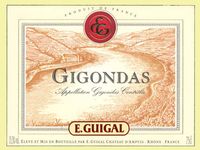While I’m on the subject of Le Moutardier du Pape …. (please see post below):
 Our dinner there was a valuable reminder of the importance of spontaneity. Of serendipity. Of “going with the flow.” Of realizing that the best doesn’t have to be the most expensive or the most famous or the most hard-to-get.
Our dinner there was a valuable reminder of the importance of spontaneity. Of serendipity. Of “going with the flow.” Of realizing that the best doesn’t have to be the most expensive or the most famous or the most hard-to-get.
Many of my food-loving friends and acquaintances visit France – or New York or London or L.A. – armed with an eating itinerary. They’ve got reservations months in advance at the hippest boites, the Michelin-starred manses in the countryside, the chic big-city eateries with $350-per-person prix-fixe menus. (No, I’m not kidding.) They rack up Michelin stars like a gunfighter puts notches in his belt.
In contrast, on the first night of our recent trip, my husband and I found ourselves at Le Moutardier in Avignon, France, a restaurant we chose, basically, because it was open on a Sunday night when virtually everything else in town was closed.
We dined outside on the cobblestone plaza, in front of the imposing, 14th century Pope’s Palace. The evening air was balmy, the ¾ moon rose and hovered over the palace turrets, and the food – including sauteed rascasse (the principle fish in bouillabaisse) on remarkable ratatouille, a dreamy dessert, and salad with local cheese and roasted cherry tomatoes -- was creative and delicious. (The restaurant’s Web site shows the full extent of the Perrin family’s creativity and devotion to detail.)
We ordered a bottle of Gigondas, in a sentimental nod to biking friends who learned to love that local wine on our last Provence trip but weren’t able to join us this year. The wine was as heavenly as the food. And we toasted our good fortune at finding and appreciating this serendipitous dining experience.
 BY THE WAY…. Gigondas, pronounced “zhi-gon-dahs” is often referred to as the poor man’s Chateauneuf-du-Pape. It’s been produced in the Rhone River valley since Roman times. AOC (Appellation d’Originie Controlée) rules state that the wine must be made of Grenache, Syrah and Mourvedre grapes, but the proportions are up to the winemakers. Gigondas tends to be a rustic, in-your-face kind of wine, but with lovely cherry, raspberry and plum notes. The Syrah and Mourvedre grapes add spice. Descriptive words that tend to pop up in “tasting notes” are grapey, jammy, ripe fruit, coffee and anise. E. Guigal is a well-known and reliable producer whose Gigondas sells for about $20, but you can find other good examples of the wine for under $15.
BY THE WAY…. Gigondas, pronounced “zhi-gon-dahs” is often referred to as the poor man’s Chateauneuf-du-Pape. It’s been produced in the Rhone River valley since Roman times. AOC (Appellation d’Originie Controlée) rules state that the wine must be made of Grenache, Syrah and Mourvedre grapes, but the proportions are up to the winemakers. Gigondas tends to be a rustic, in-your-face kind of wine, but with lovely cherry, raspberry and plum notes. The Syrah and Mourvedre grapes add spice. Descriptive words that tend to pop up in “tasting notes” are grapey, jammy, ripe fruit, coffee and anise. E. Guigal is a well-known and reliable producer whose Gigondas sells for about $20, but you can find other good examples of the wine for under $15.

Comments